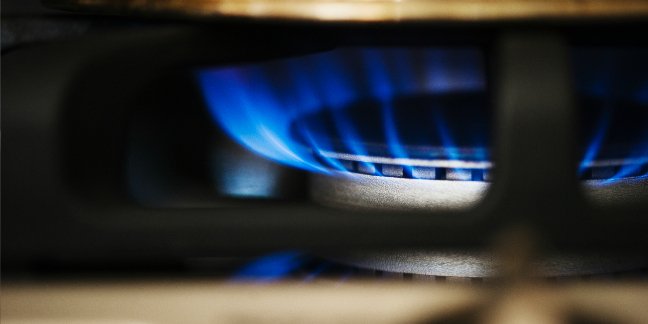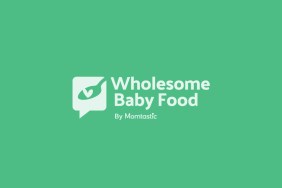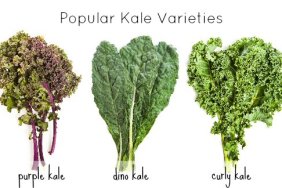Image: Getty
Did you know cooking for your baby is just as easy as cooking for the whole family? There are many ways to heat and thaw homemade baby food. On this page we will tell you all about heating and thawing your homemade baby food cubes.
Cooking Baby Food – What are the best cooking methods for preparing homemade baby food?
When venturing into the world of baby food making, one of the most often asked questions is “How should I cook the foods that I will be making for my baby to maintain the most nutrients and flavor?”
There are several ways that you can cook foods for homemade baby food. This page will discuss the ways of cooking that are best for fruits, veggies and meats.
Cooking Fruits and Veggies for Homemade Baby Food
Baking/Roasting and Steaming are the preferred methods to use when cooking homemade baby food (and your food too!) with boiling in scant amounts of water being the second best method.
Foods such as sweet potato, white potato, carrots, parsnips and squash, peaches and pears are wonderfully flavorful when baked.
** Most pediatric sources recommend cooking fruits for babies who are under 8 months old. Bananas and avocado are an exception. For infants who start solids prior to 6 months old, cooking fruits is a good idea. Cooking fruits breaks them down thus enabling easier digestion in an immature tummy. An older baby will be better able to handle the fibers and sugars of raw fruits than will the baby who is younger and just starting on solids. There are many babies who do quite well with raw fruits from 6 months of age on so use your best judgement and consult your pediatrician about the need to cook fruits. Visit Baking Fruits for Baby for some tasty baked fruit recipes and ideas.
Cooking Meats for Homemade Baby Food
Baking is preferred as the most nutrients are retained. Typically, meat purees are best made with plain water as using the natural juices may make the taste too strong for baby; adding a fruit or veggie puree is a great way to introduce the flavor of meats.
Crock pot or Slow-Cooker to Cook Meat for Baby Food – Using a crock pot or a slow-cooker to make meats for baby is a wonderful way to make a multi food combination meal. You may toss any foods that you want into the crock pot with the meat.
One of our favorite things to do is to take 3 chicken breasts (diced), a few carrots (diced and peeled), a diced onion and some other veggies and toss the whole lot into the pot. Add 4 or 5 cups of water and seasonings of your choice. All you need to do is turn the crock pot or slow-cooker on low and within 6-8 hours you have a nice meal.
If you poach or use a crock-pot (cook meats in liquids) and then throw away the juices, you are tossing out some nutrients as well so be sure to try and add those back into the finished meal!
I have included information regarding cooking in the microwaving due to the fact that many parents prefer to cook their foods this way. I believe that baking and steaming are the best cooking methods for optimal nutrient retention; microwaving food should be a last option whenever possible.
Methods of Cooking for Baby Food
Below is an outline of the different methods of cooking food and how nutritional content is affected. It covers all forms of cooking.
Steaming – This is one of the most preferred methods of cooking. By this method, nutrient loss in minimal. Left over water may be used as stock and for pureeing.
The longer any type of food is exposed to high temperatures and immersed in water, the higher the nutrient loss. (Can you imagine the nutrient loss in commercial baby foods that are cooked at sky-high temperatures to help prolong shelf life?.) Steaming as a cooking method helps foods retain their levels of water soluble vitamins too. Vitamin C is an important water soluble vitamin that helps aid in the absorption of iron. Steaming allows the foods to be surrounded by steam rather than soaked in water.
Boiling and Stewing – The disadvantage; it leads to loss of nutrients (esp. water soluble vitamins (B&C) and minerals). Loss can be limited by using the needed amount of water for cooking/for required time. Left over water could be used as stock and for pureeing.
Baking or Roasting – Baking or Roasting is cooking by dry heat in the oven. The advantage – large quantities of food can be cooked and there is a limited loss of nutrients and the food is easily digestible.
Microwave Cooking – The disadvantages of microwave cooking are that food is cooked in small quantities and some foods may lose nutrients at a very high rate. The flavor and nutritive values of most vegetables are good in comparison with other methods.
You may use a microwave for cooking if you prefer – the main disadvantage to this is that large batches of foods typically cannot be made at one time; many people find that the use of a microwave is unhealthy and potentially dangerous.
The amount of nutrients that are “destroyed” by a microwave varies by the type of food that you are cooking. There are some foods whose nutrients are retained better when microwaved than when steamed or boiled for example. Broccoli is said to be one food that may lose a vast majority of its nutrients when microwaved, more so than any other vegetable. However the study done on broccoli and the microwave is being negated due to the faulty methodology used.
Pressure Cooking – Loss of nutrient is less in this method since only little water is used.
Frying – Do frying only if required. Shallow frying is much better than deep frying. Deep frying at high temperature can produce toxic chemicals such as peroxides, aldehydes, ketones, hydroperoxidases, cyclic monomeres etc. Preferably avoid reusing the fried oil. We prefer to “fry” in a small amount of olive oil – rather like sauteeing.
Grilling – In this method, if the food is burnt with coals and fire, it can cause carcinogenic effect. Babies and small children should not be served grilled foods constantly.
![]() Remember, always consult with your pediatrician regarding introducing solid foods to your baby and specifically discuss any foods that may pose allergy risks for your baby.
Remember, always consult with your pediatrician regarding introducing solid foods to your baby and specifically discuss any foods that may pose allergy risks for your baby.
![]() This site complies with the HONcode standard for trustworthy health information:
This site complies with the HONcode standard for trustworthy health information:
verify here.


